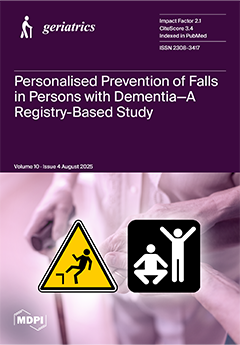The global aging population has led to a growing incidence of malignancies, including metastatic non-small-cell lung cancer (mNSCLC). Immunosenescence may affect the efficacy of immune checkpoint inhibitors (ICIs). The prognostic role of age in ICI-treated mNSCLC remains uncertain.
Objectives: This study aims to assess whether age independently influences survival, response, and toxicity in mNSCLC patients treated with ICIs, and to examine potential interactions with clinical factors.
Methods: In this retrospective cohort study, 105 patients with mNSCLC treated with ICIs were enrolled. Patients were stratified into four groups based on age quartiles. Clinical, pathological, and treatment data were collected. Survival outcomes were analyzed using Kaplan–Meier curves, ROC curve and multivariable Cox regression models adjusted for confounders. Interaction and restricted cubic spline analyses were performed to explore age-related effects. The
p < 0.05 was considered as statistically significant.
Results: The median age was 60.8 years. Clinical benefit—defined as objective response rate (51.4%) and disease control rate (86.6%)—did not significantly differ across age quartiles (
p = 0.551 and
p = 0.257, respectively). Median overall survival also did not differ significantly (
p = 0.2853). Cox regression and spline modeling demonstrated no independent association between chronological age and all-cause mortality (Model 3: HR = 1.00, 95% CI: 0.95–1.04,
p = 0.889). However, interaction analyses revealed that poor ECOG performance status (
p = 0.001), longer duration of ICI treatment (
p < 0.0001), and low PD-L1 expression (
p = 0.017) were stronger predictors of mortality in older patients. Age was associated with increased immune-related adverse events and higher Charlson Comorbidity Index scores, suggesting the need for age-specific management strategies.
Conclusions: Age alone does not predict survival in mNSCLC patients receiving ICIs. However, functional status, treatment duration and PD-L1 expression may modify age-related outcomes.
Full article






